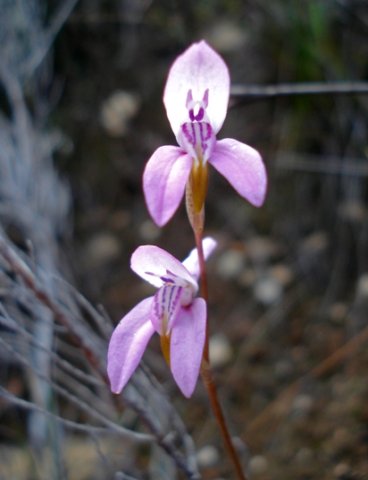Disa bifida

Disa bifida, is a slender perennial, a terrestrial orchid growing a wiry, sometimes zigzagging stem from an ovoid root tuber to heights from 25 cm to 35 cm. In Afrikaans it is commonly known as kapotjie, a name probably defying translation, but in literal meaning close to little tired or little tired one.
The species distribution is more concentrated in the Western Cape from Clanwilliam and the Cederberg in the west, but extending to the Eastern Cape as far as Port Elizabeth; a South African endemic.
The habitat is flats, mountain slopes and deep sand, but also gravel or clay soils at altitudes from 15 m to 900 m. The vegetation of this area varies between fynbos and its transition into renosterveld. The species is not considered to be threatened in its habitat early in the twenty first century.
The species went by the name of Schizodium bifidum until the late twentieth century, earlier (when first described) as Satyrium bifidum (Liltved and Johnson, 2012; Leistner, (Ed.), 2000; Bond and Goldblatt, 1984; www.redlist.sanbi.org).

